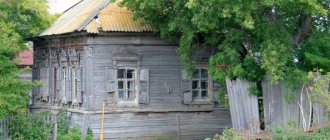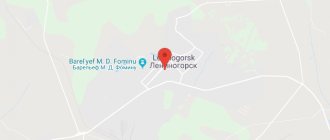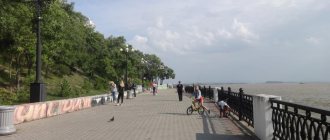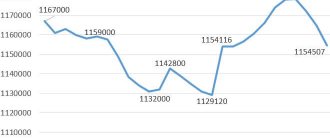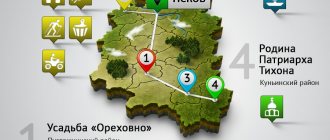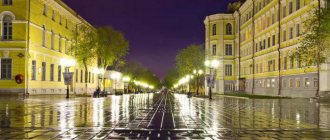Key information
The total length of the borders exceeds 1,100 kilometers. About half are in Ukraine. The area of the region is 27,000 km². The distance between the eastern and western parts of the region exceeds 270 km, and between the southern and northern parts it is about 190 km. Weather conditions have the features of a temperate continental climate. The coldest month is January. The frost-free period is 160 days.
The history of the Belgorod region begins in the 8th century. This is evidenced by artifacts that were found during archaeological excavations. The region belonged to the Khazars, Kievan Rus, Mongol-Tatars, and the Grand Duchy of Lithuania. In the 16th century, the Belgorod region became part of the Moscow Principality.
Residents
The population of the Belgorod region exceeds 1,500,000 people. Urban residents account for 67%. All the rest are employed in agriculture. The demographic situation in the region compared to the neighboring subjects of the Federation allows us to make favorable forecasts. The number of its inhabitants is growing steadily. The population density of the Belgorod region exceeded 57 people per square kilometer.
Historical reference
In 1959, the number of Belgorod residents barely reached 1,220,000 people. Moreover, city residents accounted for only 20%. In 1970, 1,261,000 were registered in the region. The share of peasants was still high and amounted to 65%. In 1979, the population of the Belgorod region exceeded 1,300,000. The number of city residents increased, it reached 53%.
In 1989, 1,380,000 people lived in the region. In 2002, according to statistics, 1,511,000. The number of city residents continued to increase rapidly and reached 65%. In 2010, the total number of Belgorod residents exceeded 1,530,000.
Population of Gubkin for 2022 and 2022. Number of residents of Gubkin
Data on the number of city residents are taken from the Federal State Statistics Service. The official website of the Rosstat service is www.gks.ru. The data was also taken from the unified interdepartmental information and statistical system, the official website of EMISS www.fedstat.ru. The website publishes data on the number of residents of Gubkin. The table shows the distribution of the number of Gubkin residents by year; the graph below shows the demographic trend in different years.
Links to official documents and resources on the population census are marked with a [*] sign; when you hover your mouse, you will see the title of the document.
| Number of residents of Gubkin | Years |
| 86,200 people | 2006 |
| 86,300 people | 2007 |
| 86,400 people | 2008 |
| 86,554 people | year 2009 |
| 88,560 people | 2010 |
| 88,600 people | 2011 |
| 88,106 people | year 2012 |
| 87,556 people | year 2013 |
| 87,896 people | year 2014 |
| 87,405 people | 2015 |
| 87,083 people | 2016 |
| 86,999 people | 2017 |
Graph of population changes in Gubkin:
The total population in 2015 was approximately 87.4 thousand people. Density - 2758 people/km².
Representatives of such nationalities as Russians, Ukrainians and others live in the city
Ethnic burial: Gubkinets, Gubkintsy.
National composition
The dominant ethnic group in the region are Russians. Their numbers almost always exceeded 90%. The ethnic composition of the population of the Belgorod region is diverse. In addition to Russians, Ukrainians, Armenians, Turks and Azerbaijanis live in the region. Their number varies. At the moment, there is a tendency to actively increase the number of representatives of the Ukrainian diaspora. The share of other ethnic groups is insignificant and does not exceed 1%.
Map of the city of Gubkin. Gubkin Yandex maps
Created using the Yandex service People's Map (Yandex map), when zoomed out you can understand the location of Gubkin on the map of Russia. Gubkin Yandex maps. Interactive Yandex map of the city of Gubkin with street names, as well as house numbers. The map has all the Gubkin symbols, it is convenient and not difficult to use.
On the page you can read some descriptions of Gubkin. You can also see the location of the city of Gubkin on the Yandex map. Detailed with descriptions and labels of all city objects.
Share information with friends:
Settlement
The list of the largest cities in the Belgorod region is headed by Belgorod. Its municipal district of the same name is considered the most densely populated. Its area is 153 km², and the number of residents exceeds 391,000. The second largest urban district is Starooskolsky. It is home to 259,986 people. Gubkinsky municipality occupies third position. It is experiencing a natural population decline. The number of citizens is less than 120,000.
There are nineteen districts in the area of the Belgorod region. Alekseevsky has a population of 61,000 people. In Belgorodsky 116,000, in Borisovsky 25,000. The population of the Belgorod region in the Valuysky district is 67,000, and in Korochansky 39,000.
List of municipal districts in which natural decline has been recorded:
- Veidelevsky (19,000);
- Volokonovsky (30,000);
- Grayvoronsky (30,000);
- Ivnyansky (22,000);
- Krasnensky (12,000);
- Krasnogvardeisky (37,000);
- Novooskolsky (41,000);
- Chernyansky (31,000);
- Shebekinsky (90,000).
The number of residents is steadily increasing in the following areas:
- Yakovlevsky (57,000);
- Rovensky (23,000);
- Rakityansky (35,000);
- Krasnoyaruzhsky (15,000).
In the Prokhorovsky municipal district, the number of deaths is equal to the number of newborns.
The most prosperous settlements in the region, from a demographic point of view, are:
- Belgorod;
- Stary Oskol;
- Valuyki;
- Builder;
- Reasonable;
- Rovenki;
- Northern;
- Veidelevka;
- Tomarovka;
- Streletskoe;
- Krasnaya Yaruga;
- Oak;
- May;
- Prokhorovka;
- Bessonovka;
- Pushkarnoye;
- Livenka;
- Sucking;
- Tavrovo;
- New Tavolzhanka;
- Maslova Pier.
List of cities in the Belgorod region whose population shows a natural decline:
- Gubkin;
- Shebekino;
- Alekseevka;
- Novy Oskol;
- Chernyanka;
- Borisovka;
- Volokonovka;
- Grayvoron;
- October;
- Biryuch;
- Urazovo;
- Willow;
- Proletarian;
- Rakitnoe;
- Horny;
- Bekhteevka;
- Skorodnoe;
- Pyatnitskoe;
- Golovchino;
- In short.
About the population of the Belgorod region as of January 1, 2022
According to the approved estimate, the population of the Belgorod region as of January 1, 2022 was 1,549.1 thousand people and increased by 1.7 thousand people, or 0.1%, in 2022.
Along with Moscow and the Moscow region, the Belgorod region was one of the 3 regions of the Central Federal District whose population increased in 2022.
The share of the region's population in the total population of the Central Federal District and the Russian Federation is 3.9% and 1.1%, respectively.
Today, among the regions of the Central Federal District in terms of population, it is after Moscow (12678.1 thousand people), Moscow (7690.9 thousand people) and Voronezh (2324.2 thousand people) regions.
The urban population increased by 1.7 thousand people (0.2%) and amounted to 1045.5 thousand people.
The rural population has remained almost at the same level. In 2022, it increased by 7 people and amounted to 503.6 thousand people.
Population growth for 2022 was noted in 3 urban districts: Belgorod and Yakovlevsky - by 0.4% each and Grayvoronsky - by 0.3%, as well as 3 municipal districts: Belgorod - by 3.7%, Prokhorovsky - by 1.2% and Krasnogvardeisky - by 0.2%.
A decrease in population was observed last year in the territory of 6 urban districts and 10 municipal districts, the largest of which is observed in the urban districts: Alekseevsky - by 1.1%, and Shebekinsky - by 0.9%, as well as in the municipal districts: Ivnyansky - by 2.1%, Veydelevsky - by 1.8%, Krasnensky - by 1.7%, Volokonovsky and Korochansky - by 1.3% each.
Among urban settlements in the region, population growth in 2022 was noted in 5 cities: Biryuch by - 2.9%, Grayvoron - by 1.0%, Belgorod - by 0.4%, Stroitel - by 0.3% and Stary Oskol - by 0.1%, as well as in 7 urban-type settlements: Severny - by 4.6%, Razumnoye - by 3.9%, Prokhorovka - by 1.1%, Rakitnoye - by 0.5%, Tomarovka - by 0.4%, Maslova Pristan and Proletarsky - by 0.3% each.
On the territory of 6 cities and 11 urban-type settlements there is a decrease in population, among which the largest in the cities: Korocha - by 1.3%, Shebekino - by 1.1% and Alekseevka - by 1.0%, as well as in urban-type settlements : Pyatnitskoye and Ivnya - by 2.0% each, Oktyabrsky - by 1.9%, Veidelevka - by 1.8% and Yakovlevo - by 1.7%.
The rural population over the past year increased in urban districts: Yakovlevsky - by 0.8% and in Grayvoronsky - by 0.1%; as well as in municipal districts: Belgorodsky - by 3.9% and in Prokhorovsky - by 1.2%.
A decrease in the rural population in 2022 was observed in 6 urban districts and 11 municipal districts, among which the largest in urban districts: Alekseevsky - by 1.4% and Gubkinsky - by 1.1%, as well as in municipal districts: Ivnyansky - by 2.1%, Veidelevsky and Volokonovsky - by 1.9% each and in Krasnenskoye - by 1.7%.
Forecasting changes in population size and structure is an integral part of characterizing the demographic situation.
The latest calculations by the Federal State Statistics Service (Rosstat) of the estimated population size until 2035 for three options (low, medium, high) are based on an assessment of the permanent population of the constituent entities of the Russian Federation by sex and age as of January 1, 2019.
The scenarios take into account the peculiarities of the dynamics of processes in the constituent entities of the Russian Federation, global patterns of evolution of fertility, mortality and migration, and the influence of the socio-economic situation on the course of demographic processes.
The forecast results presented in the middle version are considered as the most likely outcome.
According to the average version of the forecast, the population of the region will continue to grow until 2023, and then will slowly decline and amount to 1,544.4 thousand people on January 1, 2033. In the future, the population of the region will begin to grow again and will amount to 1,546.8 thousand people on January 1, 2036.
The population census is the primary source of information about the population. The upcoming population census will clarify the data of the current population estimate, and will also confirm or refute the existing demographic forecast data.
The All-Russian population census will be held using digital technologies. The main innovation of the upcoming census will be the ability for Russian residents to independently fill out an electronic census form on the State Services portal (Gosuslugi.ru). When going around residential premises, census takers will use tablets with special software. It will also be possible to register at census sites, including in the premises of multifunctional state and municipal service centers.
Previously, it was planned that the main stage of the All-Russian Population Census would take place from October 1 to October 31, 2022. Due to the difficult epidemiological situation in the country, Rosstat made a proposal to postpone it to 2021
year.
Economic situation
The Belgorod region is recognized as a developed subject of the Federation. It has not only an agricultural, but also an industrial sector. The latter is represented by mechanical engineering, production of building materials, mining of raw materials, metallurgical enterprises, and food factories.
The standard of living of the population of the Belgorod region is considered one of the highest in the Central Federal District. The leading industrial enterprises in the region are Lebedinsky and Stoilensky mining and processing plants, Oskolplast, Belgorod Cement, Stroymetallkom. Economists single out the group, OJSC SUM TsMM. The Oskol Metallurgical Engineering Plant is actively developing. The management of the Oskol Electrometallurgical Plant achieved excellent results.
Agricultural land makes up 70% of the area of the Belgorod region. These are fertile black soils. Today the region tops the list of leaders in the production of poultry, pork, dairy products and grains in Russia. The unemployment rate is minimal. The employment rate is approaching 90%.
Gubkin, a city in the Belgorod region
Gubkin, a city (since 1955) in the Belgorod region.
90 thousand inhabitants (2001). Iron ore mining. The mining capital of the Black Earth Region, its history is connected with the development of the region of the Kursk magnetic anomaly. The first evidence of Kursk iron ores dates back to the beginning of the 18th century. On September 30, 1931, the first exploration and production mine of KMA was founded. On September 19, 1939, the settlement at the KMA mine was classified as a workers' settlement and named Gubkin. In May 1953, an enterprise for the extraction and processing of iron ore, the KMAruda plant, was created. An important stage in the development of the city was the construction of the Lebedinsky quarry, where open-pit mining of iron ore began for the first time in the USSR. Gubkin is a major scientific and cultural center of the Belgorod region. The city of Gubkin has been a sister city of Dzerzhinsky since 2001.
Prepared by L.A. Gavrilova SES. M. "Soviet Encyclopedia". 1985
Gubkin city
Coat of arms of the city of Gubkin
By historical standards, the city of Gubkin is still very young; in 2010 it celebrated its 71st anniversary of its formation. It owes its appearance to the discovery of the richest iron ore deposits in the Kursk magnetic anomaly. Gubkin is rightly called the pearl of the KMA, its mining capital, because the history of the city cannot be separated from the history of the development of the entire Kursk-Belgorod iron ore basin.
In September 1931, the first exploration and exploitation mine of KMA was founded, and a settlement grew nearby, which in 1939, by Decree of the Presidium of the Supreme Council of the RSFSR, was classified as a workers' settlement and named in honor of Academician I.M. Gubkin, who led exploration work for 19 years in the KMA basin. The day the Decree was issued (September 19) is considered to be the city’s birthday.
The Great Patriotic War prevented further industrial development of the deposits. Purely peaceful people became soldiers. About 1,900 people from the young workers' village went to the front, and in total, almost 16,000 people from the region joined the ranks of the defenders of the Motherland, of whom 9,685 did not return from the battlefields. After the liberation, the village named after Gubkin presented a bleak picture. All buildings were destroyed almost to the ground, the mine was flooded, and most of the industrial and mining equipment was rendered completely unusable. But the most valuable thing remains - people’s faith in the speedy development of the KMA’s wealth.
Large-scale development of the KMA resources began in the 50s of the last century. In May 1953, on the basis of the KMA mine and two factories, the region’s first enterprise for the extraction and processing of iron ore, the KMA-ore plant, was created. Its formation and development contributed to the fact that on the site of a workers’ village a young mining town grew up, which, by the Decree of the Presidium of the Supreme Soviet of the RSFSR of December 23, 1955, was classified as a city of regional subordination.
An important stage in its development was the construction of the Lebedinsky mine, where open-pit mining of iron ore began for the first time in the Soviet Union. Its construction was declared an All-Union Komsomol construction project, and over 5 thousand young men and women came to the young city on vouchers. The city grew at a rapid pace. On March 7, 1960, by Decree of the Presidium of the Supreme Soviet of the RSFSR, Gubkin became a city of regional subordination.
The rapid growth of mining production and a significant increase in the urban population led to the restructuring of agriculture, its concentration and specialization. In 1965, the Gubkinsky district was formed, in which in subsequent years a lot of work was carried out on the construction of new agricultural complexes and processing enterprises. In the 70s, the Lebedinsky Mining and Processing Plant was built, which was subsequently listed twice in the Guinness Book of Records: as an enterprise developing a unique iron ore deposit (more than 20 billion tons) and having the world's largest quarry for the extraction of non-combustible minerals.
Palace of Culture "Forum"
Gubkin today is a modern beautiful city, one of the industrial centers of the Belgorod region with rich cultural and spiritual traditions and developed infrastructure. It is the administrative center of the Gubkinsky urban district, the total area of which is 152,662 hectares. Population – 120 thousand people. The basis of the territory's economy, along with the mining complex, is formed by such dynamically developing industries as construction, transport, communications, processing industry and agricultural enterprises.
Lazarev Square
Gubkin residents are rightfully proud of their clean, beautiful streets and squares, and landscaped neighborhood areas. This experience in the comprehensive improvement of the city and rural settlements, the construction of social and cultural facilities is widely studied and disseminated in the Belgorod region and beyond. Delegations from many cities of the Central Federal District and other regions of the Russian Federation come to get acquainted with the achievements of Gubkin residents.
Local governments carry out extensive and targeted work to improve the quality of life of the population. New socially significant facilities are put into operation every year. Over the past 14 years, 136 social and cultural facilities have been built and overhauled. These are hospitals, schools, houses of culture, sports facilities, buildings of various institutions, Orthodox churches. Many of them have no analogues in Russia in terms of the designs used during construction and reconstruction, the technologies used, modern materials and structures, and the level of equipment.
Transfiguration Cathedral. One of the largest newly built cathedrals in Russia.
“People must live with dignity,” is the main principle of the activities of the head of the administration of the Gubkinsky urban district, Anatoly Alekseevich Kretov. Fruitful work in all areas of the regional Program for improving the quality of life of the population, the creation of an effective system of local self-government bodies confirms that the leadership of the territory, through the comprehensive use of internal resources and constructive interaction with federal and regional authorities, is pursuing an effective socio-economic policy in the municipality, which contributes to the successful implementation of priority national projects and allows us to move forward towards improving the well-being of Gubkin residents.
New surgical building of the Central District Hospital
Successes in the socio-economic development and improvement of the city have been repeatedly awarded with various awards. Gubkin took second place in the All-Russian competition for the title “The Most Comfortable City in Russia” for two years in a row, and in 2003 became the winner of the competition in its category. In 2001, the “Best Managers of the New Era” Foundation awarded the “Face of Russia” diploma for high socio-economic indicators and exceptional achievements in the field of improvement, and awarded the territorial administration with a special prize in the nomination “For effective management and successful solution of the city’s socio-economic problems.” . In 2002, the city of Gubkin received a certificate from the All-Russian Golden Ruble competition. According to the results of the 2007 rating competition among the municipalities of the region, the Gubkinsky City District took first place in overall results in the development of the economy and social sphere and was included in the regional Walk of Labor Glory.
The article was presented by L.Yu. Maltseva November 10, 2010.
Find out more about the city here www.gubkinadm.ru
Fertility
In the cities of the Belgorod region in 2000, there was a tendency to increase the child population. The birth rate has doubled over the past ten years. Every year this figure increases by approximately 0.3%. The region is one of the three subjects of the Federation in terms of the number of babies born. It occupies third position, behind the Bryansk, Tver and Kostroma regions.
According to analysts, the birth rate is directly related to the quality of life and the availability of social services. Today there are 130,000 women of childbearing age in the region. The dynamics of the increase in the number of children is explained by the increase in the number of rebirths. At the same time, the number of first-born children decreased noticeably, reaching 56.2%. The share of third children is 7.3%. The number of fourth and fifth children has decreased slightly.
Every year, every twentieth resident of the Belgorod region becomes pregnant. At the same time, the trend towards an increase in the number of pregnancies among mature women continues. In the group from 35 to 39 years old, the birth rate is 6%. The category from 30 to 34 years old accounts for 18%. The maximum is observed in women over 25, but under 29.
The average age of a woman giving birth is 28 years. For reference, in 1990 this parameter did not exceed 24. There are an average of 1.4 births per woman aged 15 to 49 years.
Family Institute
The population dynamics of the Belgorod region shows stable growth, which cannot be said about the number of cases of marriage. Family structure is changing rapidly. The number of civil marriages is increasing. In the age category from 16 to 29 years, 65% of men were recorded who were not married, and 52% of women who were not married. The marriage rate is 8.5 people per thousand inhabitants.
There is a decrease in the dynamics of divorces. The divorce rate is 4.4 per thousand applications. It turns out that every second married couple files for divorce. The age of men who choose family life is gradually increasing. According to statistics from employees of the Civil Registry Office and the Department of Social Protection of the Population of the Belgorod Region, their share reached 64%.
The number of stillborn children is about 60. Among the main causes, doctors identify birth asphyxia and intrauterine fetal development disorder. There is still a high percentage of abortions in the region. Every second pregnancy is terminated. But there has been a decline in abortions among first-time mothers. Their number decreased by about 5%.
Standard of living
The employees of the Department of Social Protection of the Population of the Belgorod Region are entrusted with the responsibility of implementing federal and local programs aimed at increasing the birth rate and improving the demographic situation in the region. Material and consulting assistance is provided to large families, single parents and persons raising disabled people and orphans.
The increase in the region's population is due to the migration flow, which partially compensates for the natural decline. Social protection employees are involved in the implementation of a program aimed at the social rehabilitation of immigrants from the former republics of the USSR. Priority is given to ethnic Russians coming from Kazakhstan, Uzbekistan and Kyrgyzstan.
The effect of maternal capital encourages migrants to have children, which has a positive effect on the population of the Belgorod region. In recent years, the number of families coming from Ukraine has increased. In twelve months, about 3,000 people arrived from the neighboring country. From Uzbekistan 700, from Kazakhstan 1,300, from Kyrgyzstan 600.
There is a high level of migration activity between the population of the Belgorod and Kursk regions. Residents of the region continue to leave for populated areas of the Voronezh region and Moscow. About 2,000 people leave the region every year.
City Day 2018: how we will celebrate the 79th anniversary of Gubkin
Although every year we have City Day, in general, according to one scenario, nevertheless, on its eve, the most popular search query in search engines is “Poster of festive events”. Gubkin residents are waiting for a holiday, waiting for variety and quite familiar things. Well, let's see what will surprise us this time and whether we will be surprised...
8 September
At 9 am, the Golden Autumn fair will open its doors at the central market. It is there that the largest pumpkin will be chosen, and the pumpkin festival will become part of the fair.
The success of pumpkin growers will be assessed in four categories:
- "Giant Pumpkin"
- "Pumpkin Delight"
- "Pumpkin's Tale"
- "Merry Pumpkin."
And at 10 am a flower extravaganza will unfold on Lenin Square. We are invited to an exhibition-vernissage, whose name has not changed for several years, “Theater of Flowers – the Color of Emotions.” Dozens of teams, organizations and enterprises will present their work (many incredibly interesting), so come, there will be something to see.
September 14
The Forum Center is waiting for poetry lovers. At 14.00 there will be a presentation of Galina Rebrova’s collection of poems “With Love About Love”.
September 15th
Next Saturday microdistrict. Swans celebrate their birthday. On this occasion, on the square from 13.00 at the Lebedinets Central Cultural Centre, a large cultural and entertainment program is planned with mandatory awards for the most active residents of the microdistrict, musical gifts, exhibitions, competitions and other things.
On the same day, the Gubkin Theater invites young spectators to the premiere performance “Cat's House”. Starts at 16.00.
September 22nd
Now we have reached the most important day. It is on the 22nd that the culmination of the celebration of the 79th anniversary of Gubkin is expected, which will end with a fireworks display.
As usual, to participate in the festive procession, people will begin to gather on the streets at 9 am
. But the city fathers will start the demonstration itself at 10 am.
When the march of the groups through the square is over, the action will move to the park on Sovetskaya Street, where rural farmsteads will unfold. At the art festival “Gubkin Karagod for the anniversary of the Belgorod region” you will be able to enjoy delicious pancakes, stock up on honey for the winter, listen to ditties, and buy some crafts from craftswomen as souvenirs. It’s not for nothing that Gubkin residents love Karagod so much.
Lebedinsky Express: Karagod in Gubkin style 2017.
And in 12.00
On the stage of the Forum Central Cultural Centre, a solemn meeting “I read the city like a book” will take place.
IN 13.00
vocal fans will gather in the central square. The winners and participants of the pop song competition “Starry Rain” will perform for them.
IN 17.00
The children's holiday “Give Sunshine to Childhood” will begin.
18.00
– dance program accompanied by a brass band.
19.00
- Gala Concert.
21.00
- festive fireworks.
21.15
– dance program for youth.
From 14 to 30 September
In the exhibition hall of the Forum, an exhibition of children’s drawings “City Life” will be open for Gubkin guests.
September 18
The exhibition “Colors of Autumn” will open at the local history museum.
September 20
And from this day on, the same local history museum invites you to an exhibition of works by the children's art school teacher N. Sokolova.
...In general, I can’t say that there will be something outstanding, going beyond the usual events. Let's hope that energy is thrown into the future 80th anniversary of the city and next year the scope of the holiday and its “components” will amaze the imagination. In the meantime, let's be happy with what we have.
